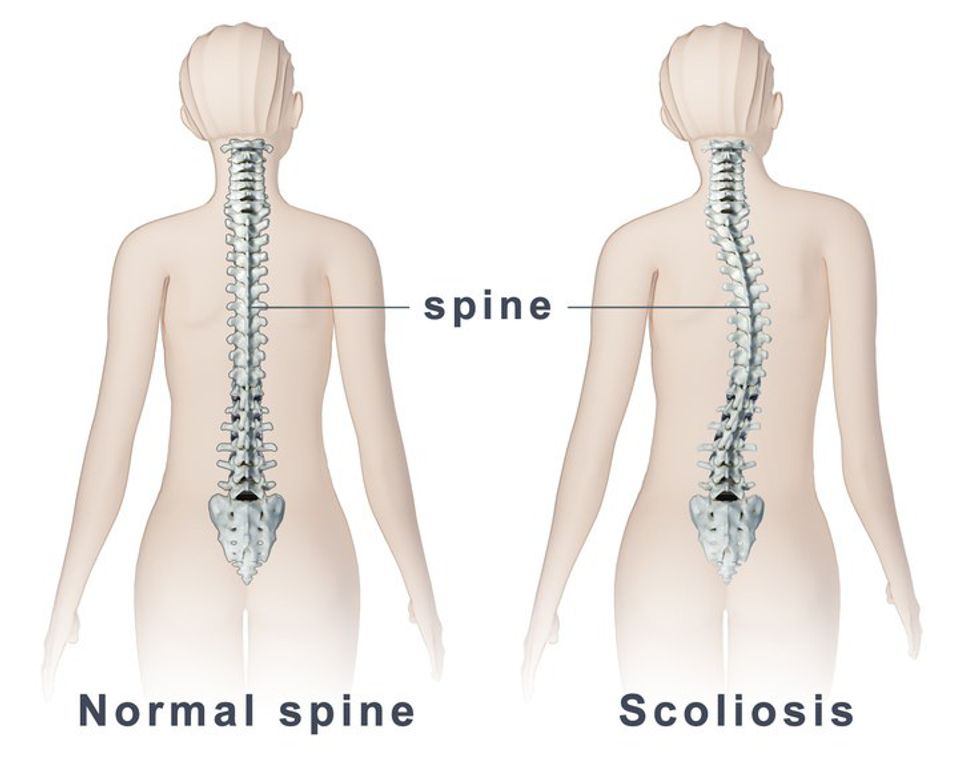I think I was about 12 years old when I first started hearing “fix your posture” or “walk straighter” from family members and friends. I didn’t know what that meant or what they were referring to, making it all the more frustrating every time I heard it. I was a young girl about to hit the age of puberty and so when my S-shaped spinal curvature caused me to walk with an arched back, others assumed that I was poking my butt out for the attention of young boys. I felt constantly attacked and every time I heard “Stop poking your butt out,” I would cry out of frustration.
About 2 years later, my mother’s friend, who worked in an Osteopathic Physician’s office, advised her to take me to the Doctor because I might have Scoliosis. It was confirmed that I did have moderate Scoliosis and I began physical therapy and swimming classes, which I learned is a beneficial exercise for people with Scoliosis to strengthen the arm muscles, legs and back, and can improve overall balance and muscle strength.
According to the U.S. National Library of Medicine National Institutes of Health, Scoliosis is a three-dimensional deviation of the spinal axis and is diagnosed when the spinal curvature exceeds 10 degrees on a plain anteroposterior X-ray image. An estimated 6 to 9 million people in the United States are affected by Scoliosis, however females are eight times more likely to progress to a curve magnitude that requires treatment. When I was first diagnosed, my doctor explained that for young women with Scoliosis hoping to one day become pregnant, besides extreme back pain during terms, delivery is the only major concern. In fact, most women opt out and choose C-section instead to prevent additional pressure being applied to their spine.
Although my Scoliosis is not severe, it is visible and does limit what I’m able to do along with the insecurities that come with knowing that my shoulders aren’t aligned and that one leg is shorter than the other. Over the years, I became much more aware of my posture. I have to remind myself to sit straight but what’s most difficult is having to put forth extra effort into walking, something that comes naturally to most. I’m also forced to wear handbags only on my right shoulder, which helps to realign both shoulders.
There are two common treatments for Scoliosis: Bracing and Surgery. Bracing involves wearing a back brace for extended periods of time, and monitoring the curve for progression. This option is only effective in patients who have not reached skeletal maturity. With surgery, modern instrumentation systems in hooks and screws are applied to the spine to anchor long rods. The rods are then used to reduce and hold the spine while bone that is added fuses together with existing bone.
I spend a lot of time researching Scoliosis and exercises that aid in decreasing its progression. I used to be extremely insecure about it, but overtime I became more accepting. I show my back more and shy away less from going to the beach. Since surgery is very expensive, I stretch every morning and avoid doing activities that involve heavy lifting which might worsen the curve.Jamaican Sprinter Usain Bolt was born with Scoliosis, musician Kurt Cobain suffered from Scoliosis while he was alive and actress Vanessa Williams had spinal fusion to correct her Scoliosis. Learning about famous people with this condition makes it easier to cope.





















